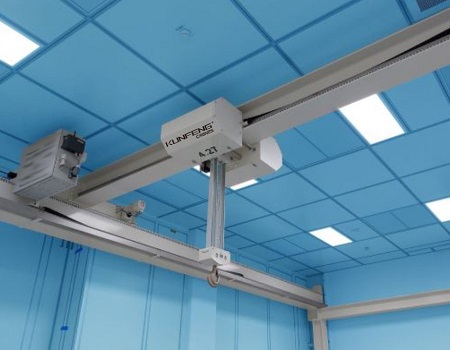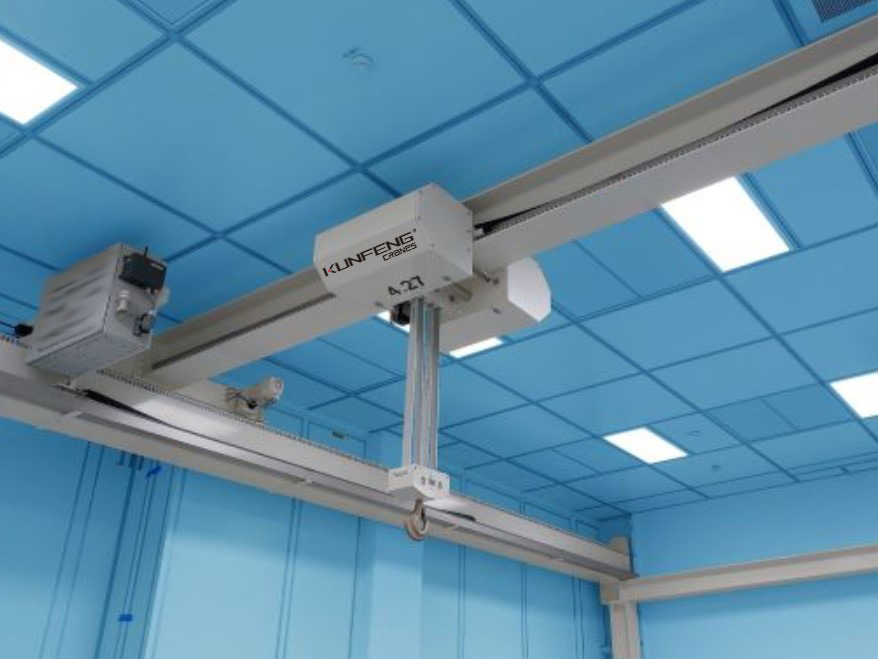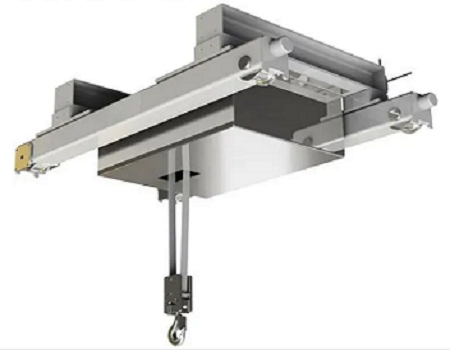
Cleanroom belt overhead crane adopts belt design to reduce the generation of dust and particles, and has a bridge structure to provide stable lifting capacity and flexible mobility.
Cleanroom belt overhead cranes use a belt design to reduce the generation of dust and particles. At the same time, they have a bridge structure, provide stable lifting capacity and flexible mobility, and are designed to meet the needs of industries with high cleanliness requirements. This type of crane is commonly used in industries such as pharmaceuticals, biotechnology and electronic manufacturing, which can effectively improve production efficiency and ensure safe operation under strict cleanliness standards. Its efficient and reliable performance makes it an important material handling tool in cleanrooms.

Importance of fiber belts in cleanroom cranes
Fiber belts are lightweight, high-strength and chemically resistant, and can safely and efficiently handle materials in strict clean environments. Compared with traditional metal slings, fiber belts reduce dust generation and help maintain the high cleanliness standards of cleanrooms. At the same time, the flexibility and tensile strength of fiber belts make them more reliable when handling precision equipment and sensitive materials, ensuring safe and precise operation. Therefore, fiber belts have become an indispensable and important part of cleanroom cranes.
Main components of cleanroom belt cranes
● Bridge: The main structure of the crane, providing support and stability, usually made of aluminum alloy or stainless steel to reduce dust and corrosion.
● Crane rails: rails installed in the cleanroom, supporting the movement of the bridge and ensuring the smooth operation of the crane.
● Hooks or grabbers: used to carry and transport materials, designed to be easy to clean and have high load-bearing capacity.
● Drive system: including motors and reducers, responsible for the movement and lifting of the bridge, ensuring precision and flexibility of operation
● Control system: usually equipped with remote control or manual operation interface, which is convenient for operators to monitor and control the operation of the crane.
● Dust cover: used to cover moving parts, reduce pollution and dust accumulation, and maintain the cleanroom environment.

Advantages of cleanroom belt cranes
● Smooth and easy-to-clean materials are used to reduce the generation of dust and pollutants, meeting strict cleanliness standards.
● The belt design and bridge structure enable the crane to move flexibly in a small space and adapt to different operating requirements.
● With good load-bearing capacity, it can safely carry heavier materials and ensure operational efficiency.
● Compared with traditional cranes, belt cranes have low operating noise, which helps maintain a quiet environment in the cleanroom.
● The simplified structural design makes daily maintenance and inspection more convenient, which helps to extend the service life of the equipment.
As a leading manufacturer of fiber belt cranes for clean rooms in China, KUNFENG CRANES provides high-performance lifting solutions with its superior technology and innovative design to meet the strict requirements of cleanliness and safety in the industry. The company focuses on the research and development and manufacture of lightweight, high-load capacity lifting equipment to ensure that it can effectively reduce pollution and improve operating efficiency when operating in a clean room environment. Our products are widely used in the fields of pharmaceuticals, electronics, and biotechnology. They have won the trust of customers with their reliability and durability, and are always committed to promoting technological progress and application innovation in the industry.